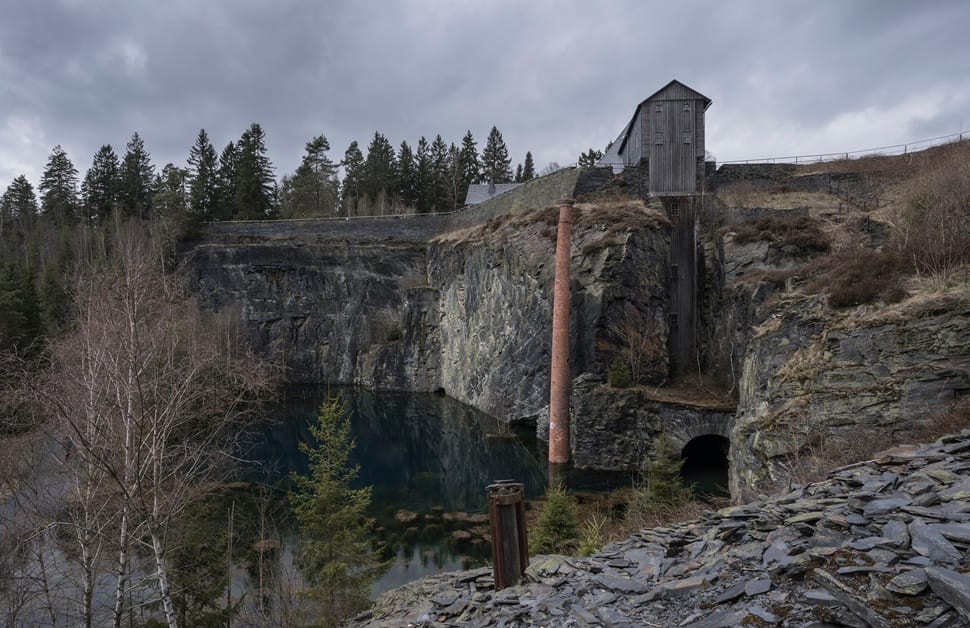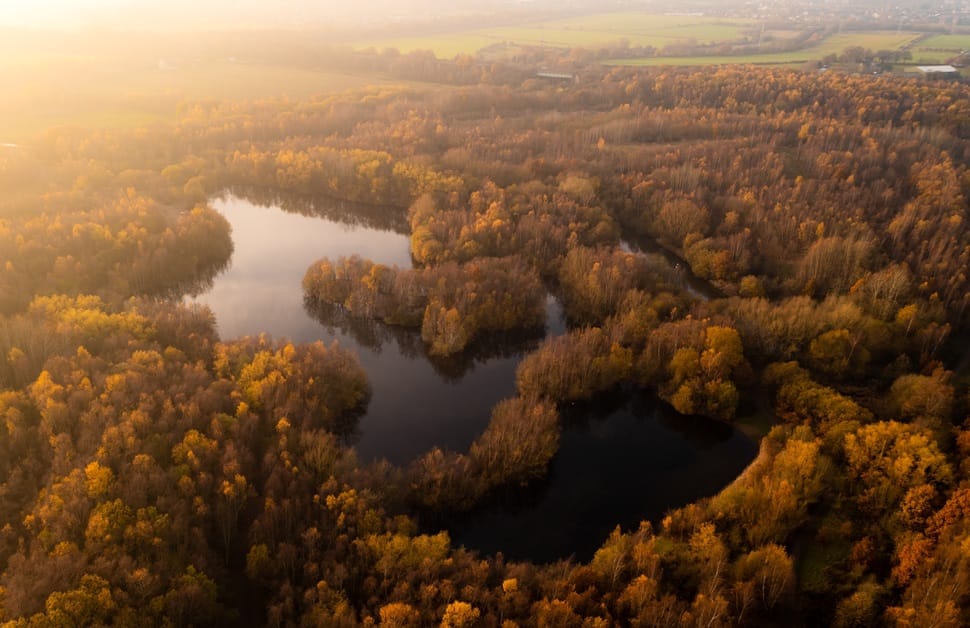Planning on a Development Site with Past Mining Activities
If a development is within a coalfield area or near historic coal mine workings or mine entries, there will be potential risks relating to ground stability, mine gas and public safety. Planning projects within a designated development high risk area (DHRA) comes with various concerns, and it could affect the cost, schedule and success of the scheme.
Developers can, however, ensure that none of the risks posed by a coal mining legacy beneath a site interfere with the proposed project by organising a coal mining risk assessment (CMRA). Our team can conduct a CMRA, and with it, the statutory requirement of the local authorities can be met and the site’s suitability for development can be confirmed.

What is a Coal Mining Risk Assessment?
A coal mining risk assessment (CMRA) is a dedicated investigation that specifically targets areas of former coal mining activities. It directly highlights any concerns that need to be dealt with and assures planning officers of a site’s condition, contribution to successful applications for planning permission.
When a proposed development site happens to be in the vicinity of an old mine, any planning applications submitted to the local planning authority could be harmed by matters relating to the health and safety of people within the vicinity, as well as the possible impact on the environment.
Why is a Coal Mining Risk Assessment Important?
Building on land affected by historic mining activities can lead to structural damage or even complete collapse due to unstable ground. Not only that, but shallow coal workings and undocumented mine entries can cause weakened ground foundations and voids, increasing the chance of serious injury and unsustainable building integrity.
Other mining-related issues come from the ground gas emissions that can migrate to the surface from old mine workings below. Gases such as carbon dioxide (CO₂), hydrogen sulphide (H₂S) and methane (CH₄) can move from old mines to new structures, accumulating in confined spaces to create health and explosion risks.
When Would You Need a Coal Mining Risk Assessment?
Previously known as the Coal Authority, the Mining Remediation Authority acts as a statutory consultee and will confirm when development sites are affected by former coal mining activities, especially if they appear within listed development high-risk areas (DHRAs). A coal mining risk assessment would then be needed to check that past mining activities aren’t likely to affect people or new structures.
It could also be the case that historical maps and records suggest or confirm that a mine is near or on the site. Whenever this happens, the local authority will insist on a CMRA to rule out any negative impacts from it. Likewise, a developer or someone else involved in the planning project could suggest arranging a CMRA in an effort to avoid any possible future issues caused by old mines.
Coal Mining Risk Assessment Exemptions
Specific exemptions are in place, preventing developers from referring to a CMRA if it simply isn’t needed. For instance, a full CMRA may not be necessary if the site is outside of a development high-risk area (DHRA) or if there are no potential sources of mine gas or unstable ground.
It could even be that a full assessment on a DHRA is unnecessary, but this can only be confirmed by the local council. For this to happen, a desk-based CMRA would need to be carried out, with the regulatory information from the desk-based study confirming that no further surveys are needed.
Coal Mining Risk Assessments
Our coal mining risk assessment guidance covers every consideration needed to meet the requirements of the local authorities.
The CMRA Process
Involved in the coal mine risk assessment are the following stages:
Site Screening
A consultant will check the site location against the records of the Mining Remediation Authority (Coal Authority) to determine if it is inside a registered development high-risk area (DHRA). The surrounding area will also be checked for mining-related issues and features.
Desk-Based Assessment
Over a desk study, specific data will be reviewed, such as abandonment plans, coal mining reports, geological records and historical maps to identify shallow coal seams, mine gas courses and legacy hazards, gauging whether or not an assessment is necessary.
Site Walkover
If the desk-based assessment identifies the need for a survey, a site walkover will be used to look for signs of cracks. Depressions, surface cracking, shallow depth and suspect ground level could indicate mine workings capable of disrupting the development, with the results complementing the prior desk study.
Intrusive Investigation
Whenever more information is needed, an intrusive site investigation will be conducted. An essential step on sites with coal seams lying at a shallow depth or where ground gas is suspected, the consultant will drill and probe into the ground to search for instability, voids and hazardous gases.
Risk Assessment
All of the collected data regarding potential risks will be analysed, including explosive hazards, collapse from shallow coal workings, gas emissions and structural damage from unstable ground, determining the level of risk and helping to decide on the appropriate mitigation strategy.
Mitigation Design
Mitigation measures could be needed to guarantee the safety of the site, encourage the development to move forward and satisfy planning conditions. Examples of measures include securing entries to mines, grouting voids and installing gas membranes to manage harmful substances.
Coal Mining Risk Assessment Report
In the report for a CMRA, the main components will be the desk study findings, details of the site investigation, the risk evaluation, the mitigation strategy, any supporting data, and a summary of mining risks to strengthen the application for planning consent.
The report will also explain how the mitigation strategy will be implemented and how the developer complies with relevant planning conditions. With every possible concern mentioned and dealt with by a qualified consultant, the completed report can be passed on to the local authority.

Planning Your Coal Mining Risk Assessment
As with all of the services available through our team, we would recommend speaking to us as early as possible to prevent any delays or unexpected costs. From early in your development, we can review your development proposal and ask you key questions about your plans. Even if you’re not sure which surveys you need, our team can advise on the best route to go down.
If you want more information about our specialists, the likely cost of a survey and how to get a coal mining risk assessment, check out the helpful section below.
Our Coal Mining Risk Assessment Consultant Team
Throughout every step of the process, our team will offer support and advice on any concerns you have about your development site and any overlap between your plans and the risks caused by nearby historical mines.
We remain involved with clients from start to finish and won’t rest until planning permission has been confirmed. Every member of our team has the qualifications, experience and skills to evaluate your site, and we’ve seen every possible issue that would otherwise prevent planning acceptance.
Coal Mining Risk Assessment Cost
It’s perfectly understandable that before you reach out for an inspection, you ask how much a coal mining risk assessment costs. One of the factors we pride ourselves on is our insistence on keeping our prices competitive, fair and easy to logically justify to clients.
Part of what affects the price of a CMRA is the level of service needed, with certain development sites needing complete assessments and others only requiring the desk study phase. Our quotes always start with a baseline cost, and from there, we only add on what we need to based on the scale of the project.
Booking a Coal Mining Risk Assessment for Planning Applications
You may need a desk study by itself or a full coal mining risk assessment with the ground investigation involved. Whatever the size and purpose of development proposals, we are equipped to provide CMRAs to clients all over the country and offer commercial advice to architects, developers and landowners.
As soon as the inspection has been concluded, the consultant will put together a coal mining report directly covering risk factors, and we will continue to support you with any other services you need. Request a free quote by emailing us, calling us or visiting our contact page and speaking with our team.